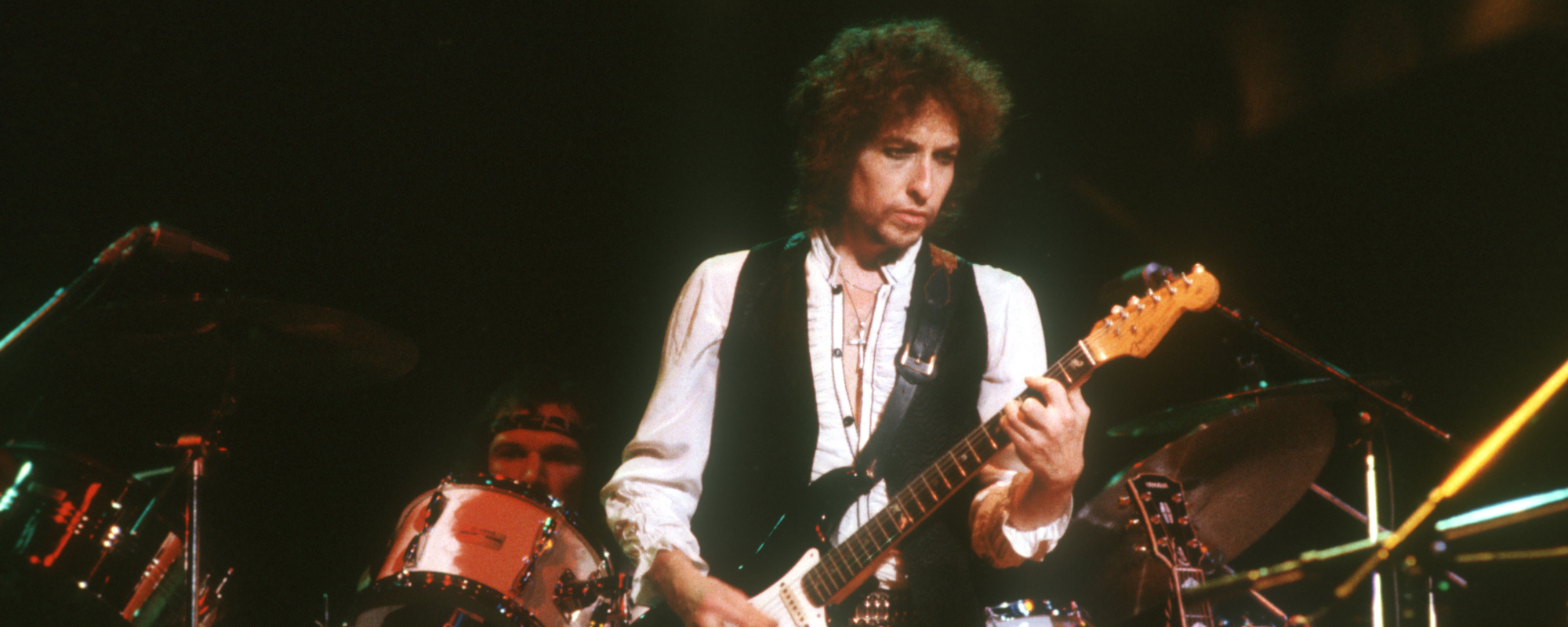For most of his career, Bob Dylan has gone to great lengths to hide himself from the public eye, preferring to reveal his personality traits and inner life in his songs. But just as his meteoric rise was beginning, the world got a close look at him through the lens of a documentary filmmaker in Bob Dylan: Dont Look Back (and yes, that’s how they spelled it, without the apostrophe).
Videos by American Songwriter
Released in 1967 but filmed in ’65, Dont Look Back shows a guy of immense talent involved in complicated relationships with fans, hangers-on, women, and, most obvious of all, the press. Even after countless other films like it have been made, it still plays as revelatory as ever.
D.A. and Dylan
Dylan and manager Albert Grossman agreed to let a young filmmaker named D.A. Pennebaker follow him around with cameras when his 1965 tour hit Great Britain. Fans know this was a crucial time in the artist’s career, as he was beginning to leave behind his folk-song, protest-singer roots in favor of more personal, complex material.
He was also beginning to add electric instruments to the mix in the studio, but this tour was still acoustic. Perhaps that’s why Dylan doesn’t always seem that engaged with the material on stage, as he was already mentally moving to another place. Then again, performances weren’t what Pennebaker and his cameras were truly after.
Instead, the documentary concerns itself with Dylan amid the tumult that goes along with being a pop star. That meant showing fans with wildly contrasting opinions about the direction his music was taking. It also meant a good portion of the film was spent highlighting his entourage, which included the bullying manager Grossman, buddy Bob Neuwirth and his ever-ready wisecracks, and Joan Baez, whose showbiz romance with Dylan was slowly imploding.
But most of all, it shows Dylan already wary and confrontational with the press. At times, his jousting with journalists seemed like performance art. But it could also get downright ugly, a la his backstage tete-a-tete with a reporter who insisted on pressing on with questions even as Dylan treated him with utter contempt.
What’s so fascinating about Dont Look Back is Dylan showed his cards to the world at a time when most top musicians kept them close to the vest. For example, The Beatles would go through much of their whole recording career perpetrating a shiny, happy image, even though their personal lives were much messier than all that. In fact, they were milling about at one of the performances shown in the movie but stayed away from the camera’s glare.
Dylan couldn’t really hide, since he was the main attraction. Taking the film as a whole, he doesn’t come off too bad, save for a couple of unpleasant moments. But his depiction likely colored his decision to keep that private side out of the public eye, even in so-called documentaries. (See Martin Scorsese’s film Rolling Thunder Revue: A Bob Dylan Story from 2019, where Dylan used real footage but fabricated many of the stories.)
The Legacy of Dont Look Back
For his part, Bob Dylan never liked the film much, or at least that what he said in interviews. His main complaint, outside the claim that he never saw the profits from the film he was owed, is he was shown not as himself, but as a creation of Pennebaker, who dictated the Bob Dylan we would see in the film.
He wouldn’t readily surrender that control ever again. And maybe he was right, in so much as the extreme situations of a tour weren’t the proper setting for one to reveal their true self. Whatever the case, Dont Look Back represented one of the few times Bob Dylan let us see him behind the songwriting mask.
When you purchase through links on our site, we may earn an affiliate commission.
Photo by Michael Ochs Archives/Getty Images













Leave a Reply
Only members can comment. Become a member. Already a member? Log in.